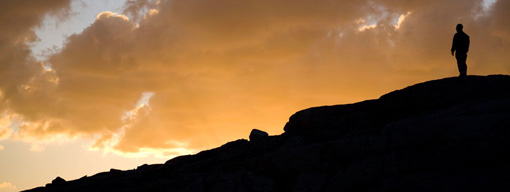What is Wilderness?
Philosophers talk about wilderness as an idea. Congress talks about wilderness as a law. Wilderness is a place of freedom and escape, but I can’t ride my bike up Mount Whitney because it’s “wilderness?" Well… What is wilderness?
The Idea:
The word wilderness means something different to each of us; we all have our own idea of where civilization ends and the “wild” begins. As a concept, wilderness is untamed, free; it exists on its own terms, outside our control. To some wilderness is scary - that which they do not know, unmapped and forbidding. For others it is appealing - a place to escape, to explore. In a phrase, wilderness is that place “out there.”
The idea of wilderness is philosophical, something that writers and thinkers will grapple with forever, but in America “designated wilderness” also has a very specific legal meaning. These two definitions of wilderness depend on each other; the idea forms a basis for the law, and the law embodies the spirit of the idea.
The Law:
In 1964, in an almost unanimous vote, the United States Congress passed the Wilderness Act. This short piece of legislation, originally written by Howard Zahniser, legally defined “designated wilderness” and established America’s National Wilderness Preservation System. According to the act:
“A wilderness, in contrast with those areas where man and his own works dominate the landscape, is hereby recognized as an area where the earth and community of life are untrammeled by man, where man himself is a visitor who does not remain.”
If you’re someone who values America’s wilderness areas, take a few minutes to read the actual act. As laws go, it is short and sweet.

Where Is It?
Since the Wilderness Act was first passed, Congress has established 757 separate wilderness areas (as of November 2013). Each of these areas is protected by the 1964 Wilderness Act, but they are managed by four different federal agencies: the Forest Service, the Bureau of Land Management, the National Park Service, and the Fish and Wildlife Service.
Designated wilderness areas are managed by these four agencies, but their boundaries do not necessarily match up with the boundaries of the parks or forests that are managing them. Some wilderness areas include only a part of a park or forest (like the Sequoia and Kings Canyon Wilderness) while others are split between more than one (like the Domeland Wilderness).
For much, much more about America’s designated wilderness areas, check out wilderness.net

